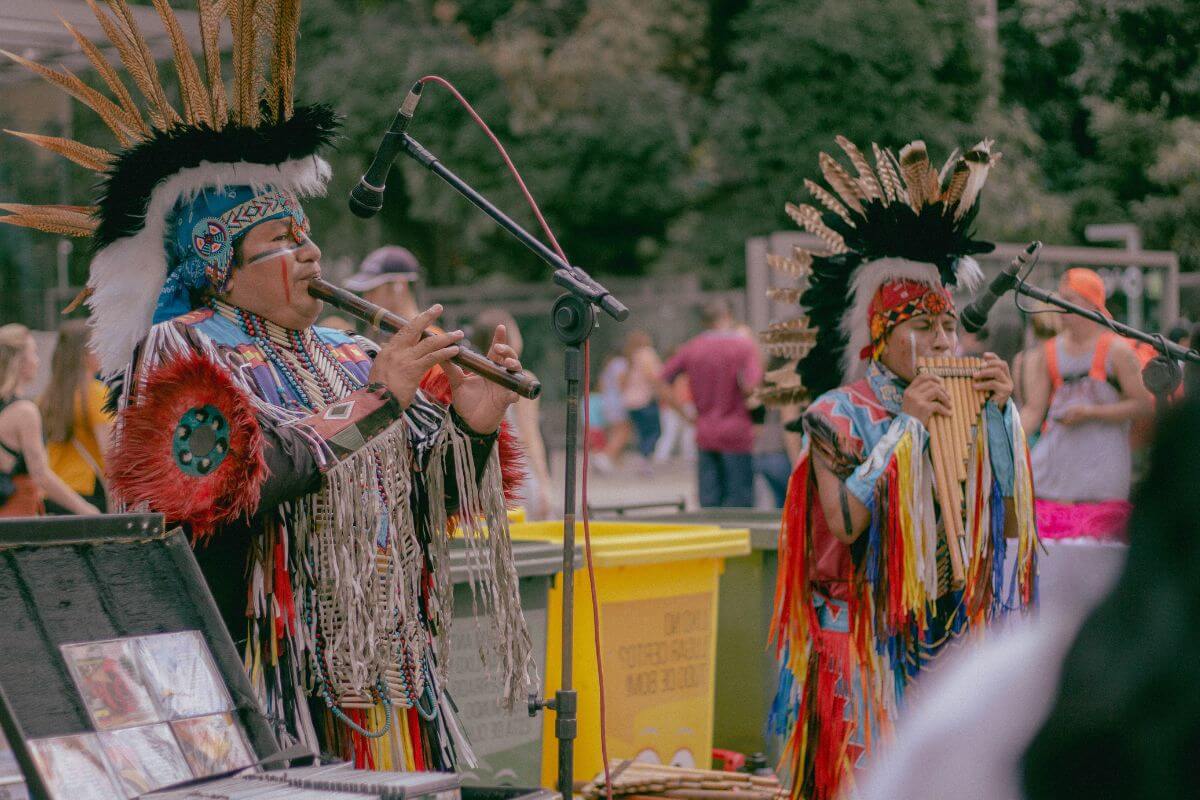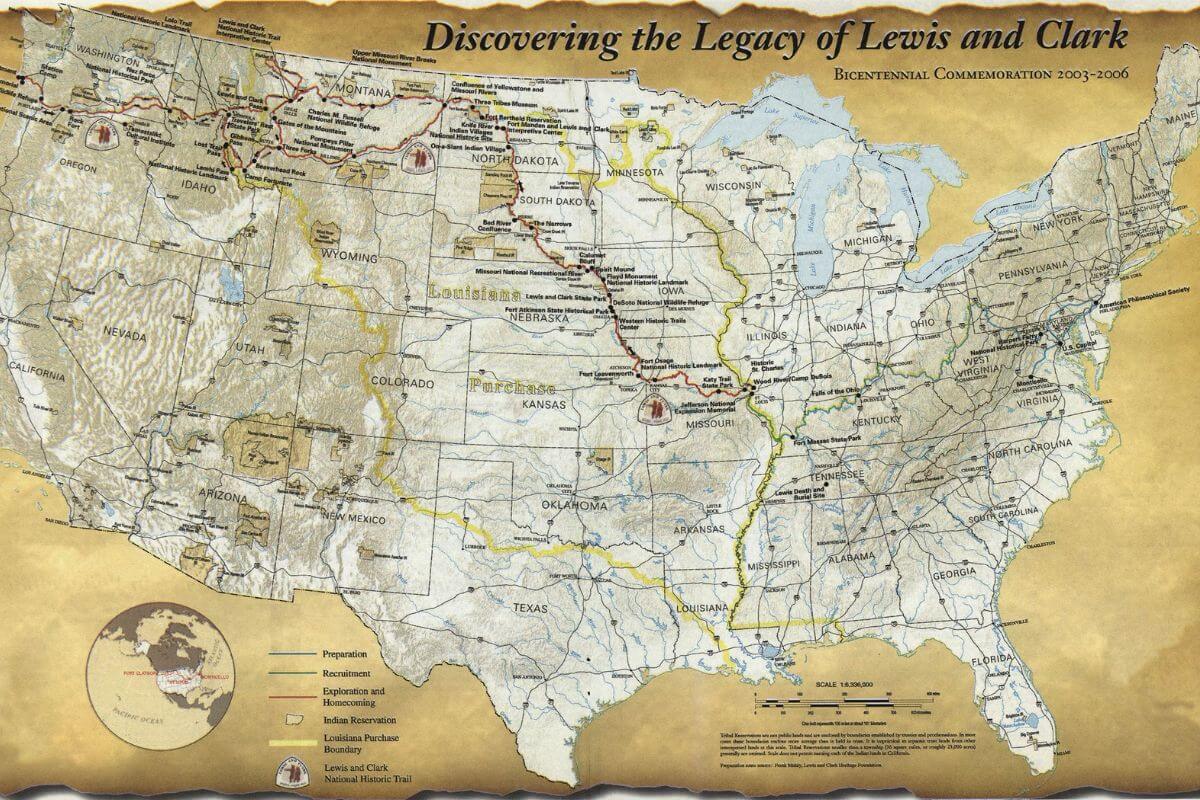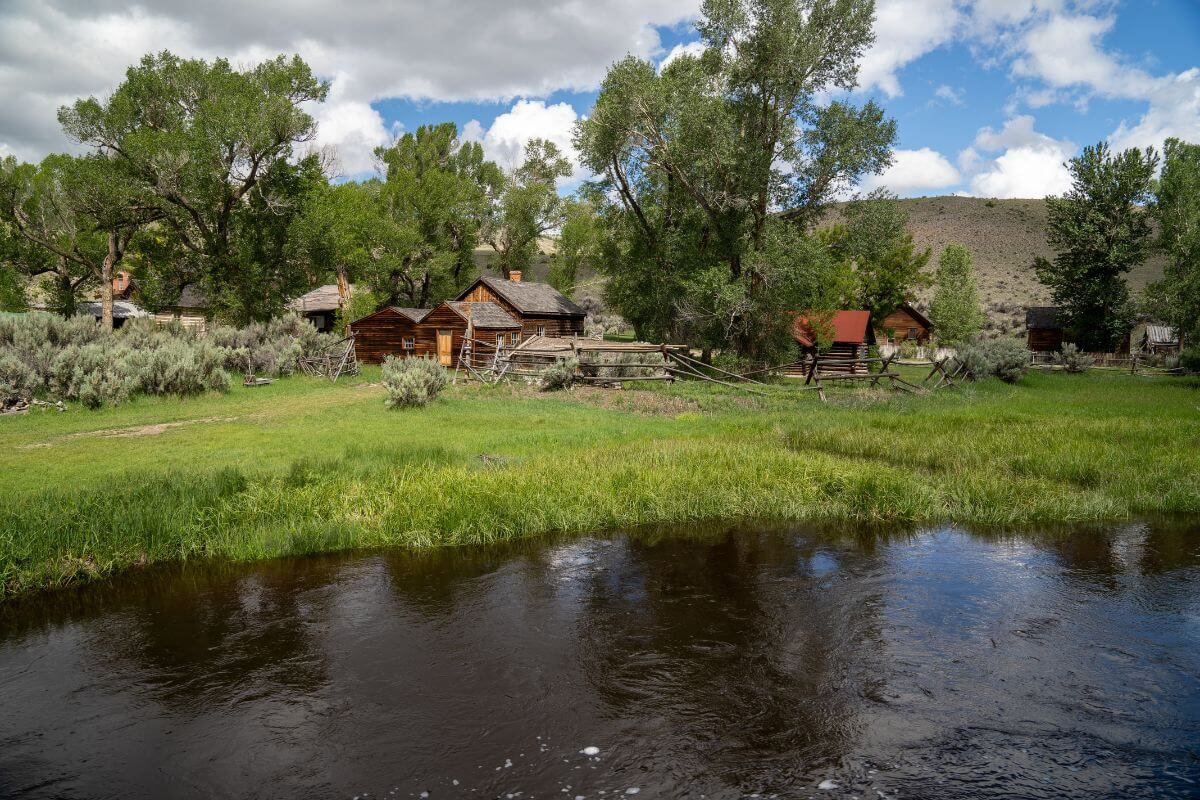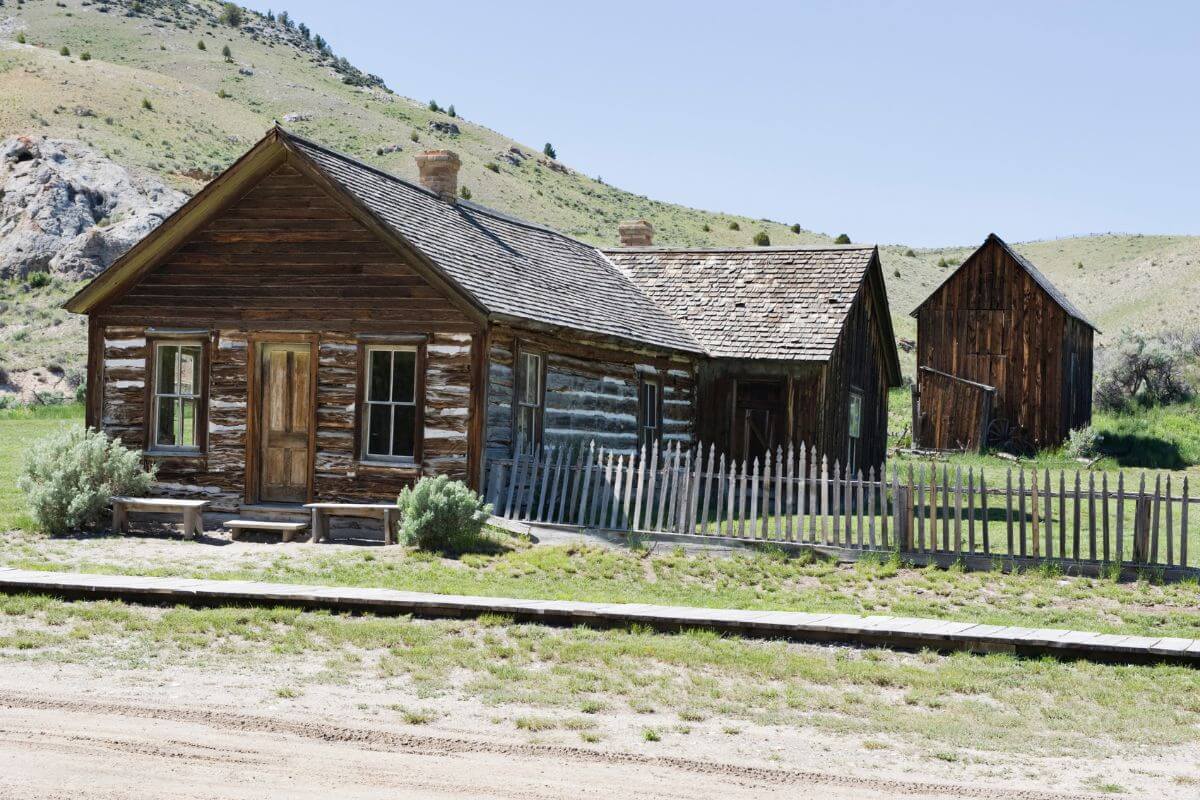Hey there, history buffs! Are you ready to embark on a journey through the remarkable past of Montana? Grab your sense of adventure, and let’s explore the fascinating tapestry of this captivating state together.
In this article, I’ll take you on a thrilling ride through time, unearthing stories of pioneers, battles, and iconic landmarks that have shaped Montana into the treasure trove of history it is today.
Join me in unraveling tales of explorers like William Clark and General George Custer, who left an indelible mark on the Treasure State’s history. But it’s not just about the famous figures.
We’ll also explore the lesser-known narratives, such as the experiences of Catholic missionaries, the rise of silver mines and trading posts, and the struggles and triumphs of Montana’s 20th-century pioneers.
Get ready to be captivated by the rich heritage and vibrant spirit that is Montana. Let’s dive into the past together and uncover the hidden gems that make this state a treasure trove of historical wonders.
Montana Native Roots and Early Exploration

Before the exploration and colonization of Europeans, Native American tribes inhabited the land that would become Montana. They engaged in hunting, gathering, and trading across the region.
These indigenous groups comprise the Crows in the southern central region, the Cheyenne in the southeastern, and the Blackfeet, Assiniboine, and Gros Ventres in the central and north-central areas.
The Kootenai and Salish occupied the western sector, while the Pend d’Oreille resided around Flathead Lake, and the Kalispel found solace in the western mountains.
When white explorers and fur traders arrived in the 18th century, they encountered these tribes, leading to a mix of cultural exchange and, at times, conflicts.
Catholic missionaries, like the Jesuit Pierre-Jean De Smet, ventured into the region in the mid-19th century, aiming to convert and assimilate Native Americans into European religious practices.
As settlers arrived, Native Americans were pushed from their lands. In the 1870s, tribes like the Arapaho, Cheyenne, and Sioux united to resist.
In 1876, the Battle of Little Bighorn in Montana saw General George Armstrong Custer’s defeat by Native American forces under Sitting Bull and Crazy Horse, becoming an iconic moment in American history.
This event sometimes referred to as “Custer’s Last Stand,” showcased the strength and resilience of the Native Americans. However, their triumph was short-lived, as they were eventually defeated.
Montana Lewis and Clark Expedition

The Lewis and Clark Expedition, an iconic American journey, played a pivotal role in mapping the state’s geography, natural resources, and landscapes.
Their meticulous records and maps laid the foundation for subsequent exploration and settlement, introducing the region of what is now Montana to European-American explorers.
The Lewis and Clark Expedition was also a scientific pursuit, reports of the land’s fertility, water resources, and agricultural potential played a role in the subsequent European-American settlement.
Their scientific observations of flora, fauna, climate, and geology provided valuable insights into the state’s natural history, enhancing understanding of its ecosystems.
- Learn more about Montana’s past events
The following table outlines the Lewis and Clark Expedition’s journey through Montana:
| Date | |
|---|---|
| May 14, 1804 | Lewis and Clark embark on their Missouri River expedition, aiming to uncover insights about upper Missouri and find a path to the Pacific. |
| April 27, 1805 | The expedition reached what we now know as Montana, having covered an astounding 1900 river miles. The region’s vast landscapes and rugged terrain underscore the challenges they faced. |
| September 13, 1805 | The expedition exits Montana at Lolo Pass. |
| June 29, 1806 | Lewis and Clark re-enter the same path at Lolo Pass, a mountainous passage presenting both physical and logistical challenges. |
| August 3, 1806 | William Clark reaches the region’s eastern border, marking a significant milestone. A few days later on August 7, Meriwether Lewis crosses the same border as they approach the journey’s culmination. |
The Lewis and Clark Expedition was the earliest group of white explorers to travel through Montana paving the way for fur trappers and traders who arrived soon after.
Fur trappers were hunters who captured animals like beavers for their valuable fur, which fur traders then bought and traded for supplies like tools and clothes.
They set up trading posts and traded with Native Americans, introducing alcohol and new ways of doing business which had negative effects on Native Americans.
The fur trade mostly ended by the 1840s due to fewer beavers and the waning popularity of beaver hats.
After the trappers, Catholic missionaries came and established Saint Mary’s Mission, the state’s first permanent settlement. They encouraged farming and brought new industries like sawmilling.
Montana Gold Rush and Settlement: Path to Territory Status

It was during the 1860s that the discovery of gold ignited a frenzy, attracting numerous prospectors to the region and leading to the establishment of Montana’s territory.
The influx arrival of people spurred the growth of bustling towns that flourished rapidly and faded equally swiftly when the gold reserves were depleted.
In the western part of the region, the foundation of the 1st permanent white settlement revolved around the precious metal that had bewitched so many.
Gold Creek, east of Drummond, witnessed its 1st gold discovery in the spring of 1858, thanks to the keen eyes and intuition of brothers Granville and James Stewart, alongside their partner Reece Anderson.
This marked the initial steps toward the settlement that paved the way for the state’s transformation.
These 3 gold strikes significantly shaped Montana’s history and economic growth:
| Gold Strike | Discovery Date | Description | Gold Production | Gold Production (Today’s Prices) |
|---|---|---|---|---|
| Grasshopper Creek | July 1862 | John White and his partner discovered gold at Grasshopper Creek, leading to the founding of the town of Bannack nearby. | $5 million (1862) | $90 million |
| Alder Gulch | May 1863 | 2 prospectors who had left Bannack to search for gold camped along Alder Creek on their way back. They decided to pan a little, which resulted in finding gold. | Over 2.5 million troy ounces (1863) | Over $40 billion |
| Last Chance Gulch | July 1864 | The ‘Four Georgians’ group began working at Last Chance Gulch. This area yielded plentiful and easily accessible gold. | $19 million (1864-68) | Approximately $221 million |
News of Montana gold strikes spread like wildfire across the U.S. and Europe. Aspiring miners flocked to steamboats, which ferried them up the mighty Missouri River to the bustling hub of Fort Benton.
These pioneering individuals ventured from places like Colorado, Nevada, and California, where they had already witnessed the feverish booms and breathtaking busts of previous gold rushes from 1840 to 1850.
They brought with them their skills, their stories, and their dreams of striking it rich in this promising new land.
The discovery in Alder Gulch in 1863 turned out to be the most extensive among all of Montana’s gold discoveries, giving rise to Nevada City and Virginia City.
During the 1880s, even though gold was still very important, Helena had more millionaires per person than anywhere else in the country. Records indicate there were 50 such millionaires.
Numerous other prosperous “boomtowns” sprang up from the frenzied hunt for gold and the discovery of silver.
Granite, Elkhorn, Confederate Gulch, Diamond City, Montana City, Garnet, Coloma, Horse Prairie Creek, Southern Cross, Pony, and Marysville all etched themselves into the state’s rich tapestry of history.
Here is a chronological overview of key events that shaped Montana’s territorial and statehood journey:
| Date | |
| May 26, 1864 | The establishment of the Montana Territory was accomplished through the division of the preexisting Idaho Territory, enacted by Congress and sanctioned by President Abraham Lincoln. |
| 1864 | The Congressional legislation, identified as the Organic Act, gave rise to Montana and outlined a relatively conventional structure for the territorial government. |
| 1875 | Helena emerged as a more permanent town and replaced Virginia City as the territorial capital. |
| 1889 | Montana joined the ranks of the United States as a state, with Helena proudly donning the prestigious title of the official capital. |
| 1890 | Gold started becoming less important compared to copper. Butte became known as the “Richest Hill on Earth” as it became one of the world’s most productive mining regions. |
The Butte miners’ needs drew in merchants, and before long, cattlemen arrived to provide them with food. This established Montana’s cattle ranching industry, many of which still operate today.
These tales of the gold rush in Montana and the subsequent settlement embody the spirit of adventure, perseverance, and the quest for riches that shaped this remarkable land.
Montana Statehood and Modern Development

When President Benjamin Harrison officially declared Montana as the 41st state of the union on November 8, 1889, it marked the beginning of a new era for this vast and captivating land.
Joseph K. Toole assumed the role of the state’s first governor, leading the state into a future filled with growth and progress.
Montana earned its nickname, the Treasure State, and adopted its state motto, “Oro y Plata” (spanish for “Gold and Silver”), due to the presence of substantial gold and silver mines within its borders.
- Read more about Montana’s name origin
The battle for the state capital’s location became a legendary struggle between two powerful figures. The “Copper King” Marcus Daly of Anaconda vied against his rival, William A. Clark, who advocated for Helena.
In the end, Helena emerged victorious, solidifying its place as the heart of the region.
As the 20th century unfolded, the state’s economy evolved away from its reliance on mining and logging. Technological advancements diminished the need for manual labor in these traditional industries.
Today, the state’s economy has diversified further. Its mountains host grizzly bears, gray wolves, and bison, while the plains are home to pronghorn, and badgers, showcasing its rich wildlife.
Montana boasts 2 renowned national parks, Yellowstone, famous for its geothermal wonders and wildlife diversity, and Glacier, acclaimed for its breathtaking alpine scenery and pristine lakes.
Alongside these natural wonders, sectors such as coal, petroleum, gold, silver, copper, lead, and talc continue to contribute to its growth and development.
Montana History Final Thoughts

Before European explorers arrived, diverse tribes thrived across the region, engaging in their unique ways of life leaving their imprints on the landscape.
Catholic missionaries aimed to assimilate Native Americans into European ways, while westward expansion displaced indigenous communities, which both held elements of cooperation and conflict.
The Battle of Little Bighorn stands as a poignant testament to the Native Americans’ resistance and the complex interactions that shaped the state’s early history.
The Lewis and Clark Expedition, a milestone in American exploration, not only mapped the geography of Montana but also uncovered its scientific and natural wonders.
The expedition’s meticulous documentation laid the foundation for future exploration and settlement, revealing the state’s potential for agriculture and resources.
The rush for gold brought a wave of settlers seeking fortune, leading to the establishment of bustling towns that flourished and faded.
Grasshopper Creek, Alder Gulch, and Last Chance Gulch bore witness to the dreams and struggles of those who sought riches in the rugged terrain.
Montana Territory’s establishment also shaped the state’s identity, as towns grew, industries evolved, and statehood was achieved, transforming the wild frontier into a thriving state.
The iconic Yellowstone National Park and Glacier National Park further highlight the state’s natural wonders and contribute to its unique allure.
As modern development diversifies its economy and embraces new challenges, the echoes of the region’s Native roots and early exploration remain a source of inspiration.
The spirit of adventure, the quest for prosperity, and the legacy of those who came before continue to guide the state’s journey forward, weaving together a rich tapestry that is uniquely Montana.
Montana History FAQs
1. Why Does History Remember Montana?
Montana is historically famous for its role in the Lewis and Clark Expedition, the Battle of Little Bighorn, and its contributions to the gold rush and cattle ranching industries.
The state’s Native American history, mining legacy, and commitment to environmental conservation also define its historical significance.
2. What Did They Originally Call Montana?
Originally, the entire mountainous western region was called “Montaña del Norte” by early Spanish explorers.
However, the term “Montana” was incorporated into a bill by the United States House Committee on Territories in 1863 for the territory that later became Idaho Territory.
3. Why Did They Name It Montana?
The name “Montana” originates from the Spanish term “montaña,” which translates to “mountainous.”
This name was chosen due to the state’s abundant mountains, boasting over 300 peaks surpassing 9,600 feet in elevation.
4. What Is Montana’s Main Industry?
Montana’s main industry is characterized by a combination of sectors. The primary sector, encompassing agriculture, forestry, mining, and energy production, plays a significant role in the state’s economy.
Additionally, services contribute significantly to the economic landscape. Roughly 1/3 of the state’s workforce is engaged in the service sector, reflecting the state’s diverse economic activities.
If you’re interested in diving deeper into Montana, stay involved with these articles:
- https://mt.gov/discover/brief_history.aspx
- https://www.mbmg.mtech.edu/Pubs/Lewis-Clark/main.asp
- https://www.umt.edu/this-is-montana/columns/stories/gold-western-montana.php
- https://www.umt.edu/this-is-montana/columns/stories/montana-statehood-part1.php
- https://mhs.mt.gov/education/Elementary/Chap4.pdf
- https://www.umt.edu/this-is-montana/short-notes/stories/events-shaped-montana.php
- https://mhs.mt.gov/education/Textbook/Chapter6/chapter6.pdf

